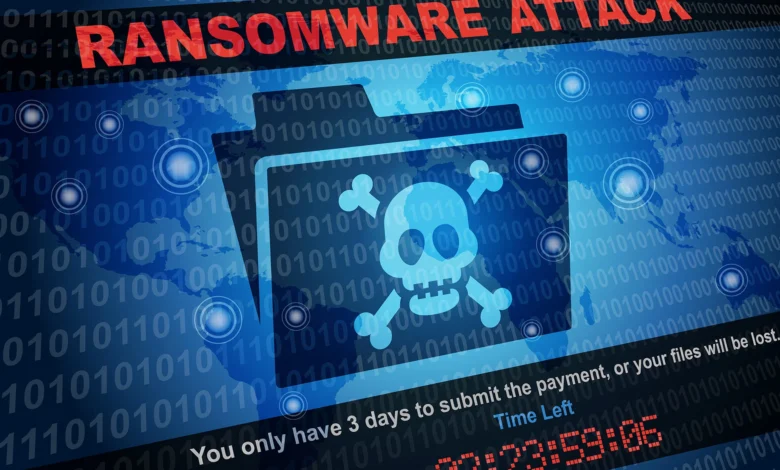Understanding Ransomware: 9 Tips to Protect Your Business

Ransomware is a big threat to businesses today. It’s a type of harmful software that locks your files and asks for money to unlock them. This can stop your business from running normally.
Because the risk is so high, it’s important to know how ransomware works. The good news is there are simple and effective ways to help protect your business from these attacks.
Let’s explore.
1. Understand Ransomware Types
Ransomware is a kind of harmful software that locks your files or computer. It asks for money to unlock them. There are different types of ransomware.
Crypto ransomware locks your files so you can’t use them until you pay. Locker ransomware blocks you from using your whole device. Scareware shows fake warnings to trick you into paying for things you don’t need.
Doxware says it will share your private information unless you pay. Ransomware-as-a-Service (RaaS) lets criminals rent ransomware, making the problem worse.
Knowing about these types helps businesses stay safe. To protect yourself, use backups, install antivirus software, and keep it updated. Catching ransomware early can stop data loss and money loss.
2. Regularly Back Up Your Data
One of the strongest defenses against ransomware is keeping current backups of critical data. If an attack occurs, having clean backup files can minimize downtime and limit the impact. To ensure effectiveness, your backups should be:
- Stored in a secure, off-site location.
- Regularly updated to capture the latest changes.
- Tested periodically to ensure functionality in case of disruption.
These steps make recovering from a ransomware attack significantly easier.
3. Implement Robust Security Measures
Start by using strong passwords and turning on multi-factor authentication (MFA) to make accounts safer. Keep software up to date to fix security problems. Use firewalls, antivirus programs, and tools that can spot strange activity.
Back up your data often and keep a copy offline in case of an attack. Teach employees how to spot phishing emails, scams, and how to stay safe online.
Give people access only to what they need for their jobs. Check your systems often for weak spots and fix any problems you find. Using many layers of protection helps keep your business safer from growing online threats.
4. Educate Your Employees
Teaching employees about cybersecurity is one of the best ways to protect a company from online threats. Regular training helps workers spot and deal with dangers like fake emails, bad links, and trick scams. Show them how to notice strange behavior, report problems quickly, and follow company rules.
Remind them to use strong passwords, browse safely, and handle data with care. Practice attacks and fun training sessions can help people stay interested and remember what they learn.
Keep the training up to date and make sure new employees get it too. When staff know how they help protect company data, they take an active role in keeping it safe. A team that understands these risks can help prevent mistakes that lead to data breaches.
5. Enable Multi-Factor Authentication
Multi-Factor Authentication (MFA) adds an extra layer of security by requiring more than just a password to access sensitive systems. Even if login credentials are stolen, MFA helps block unauthorized access. By implementing MFA, organizations can significantly lower the risk of ransomware attacks and other security breaches.
6. Keep Software Up-to-Date
Software developers regularly release updates to fix bugs, patch security vulnerabilities, and improve features. Ignoring these updates can leave your systems exposed to cyber threats and malware. Updated software ensures compatibility with new technologies and helps your devices run more efficiently.
Automatic updates can make the process seamless, but it’s also important to check manually, especially for apps and systems that don’t update on their own. Whether it’s your operating system, antivirus program, or mobile apps, staying current protects your data and enhances your overall digital experience. Don’t delay-update regularly to stay safe and efficient.
7. Create a Ransomware Response Plan
By having a structured response plan in place, you’ll be better equipped to react swiftly and effectively to mitigate damage. Being prepared is vital in case of a ransomware attack.
For example, a Ransomware Response plan outlines the steps to take if your business becomes a target. This plan should include:
- Immediate actions
- Communication strategies
- Recovery processes
8. Monitor Network Traffic
By closely observing data flow across your network, you can detect unusual or unauthorized activity early-often a sign of a ransomware attack in progress. Cybercriminals typically move laterally through a network before launching an attack, and traffic anomalies may reveal their presence. Using advanced monitoring tools and intrusion detection systems can help identify suspicious patterns, such as large data transfers or unusual login attempts.
Regularly reviewing network logs and setting alerts for abnormal behavior enables swift action. Proactive monitoring not only strengthens your cybersecurity posture but also minimizes potential damage, keeping your business safer from evolving ransomware threats.
9. Collaborate with Cybersecurity Experts
One good way to protect your business from ransomware is to work with cybersecurity experts. These experts know how to find weak spots, set up strong defenses, and deal with threats. They can check your systems often, keep them up to date, and make sure you’re following the latest safety rules.
They can also teach your staff how to spot fake emails and help you create a clear plan in case something goes wrong. Cybersecurity experts keep up with new threats and can stop problems before they cause serious harm. Getting help from professionals isn’t just a safety step-it’s a smart way to protect your data, your work, and your business name.
Discover Effective Strategies to Protect Your Business From Data Breaches
Understanding ransomware and implementing effective prevention strategies is essential for maintaining the integrity of your business operations. By educating your employees and establishing strong security measures, you create a safer environment.
Don’t forget to develop a plan so that your organization can respond quickly and efficiently in case of an attack. Protect your business by taking proactive steps today.
Looking for more tips and advice? You’re in the right place! Make sure to bookmark our page and come back to check out more interesting articles.




